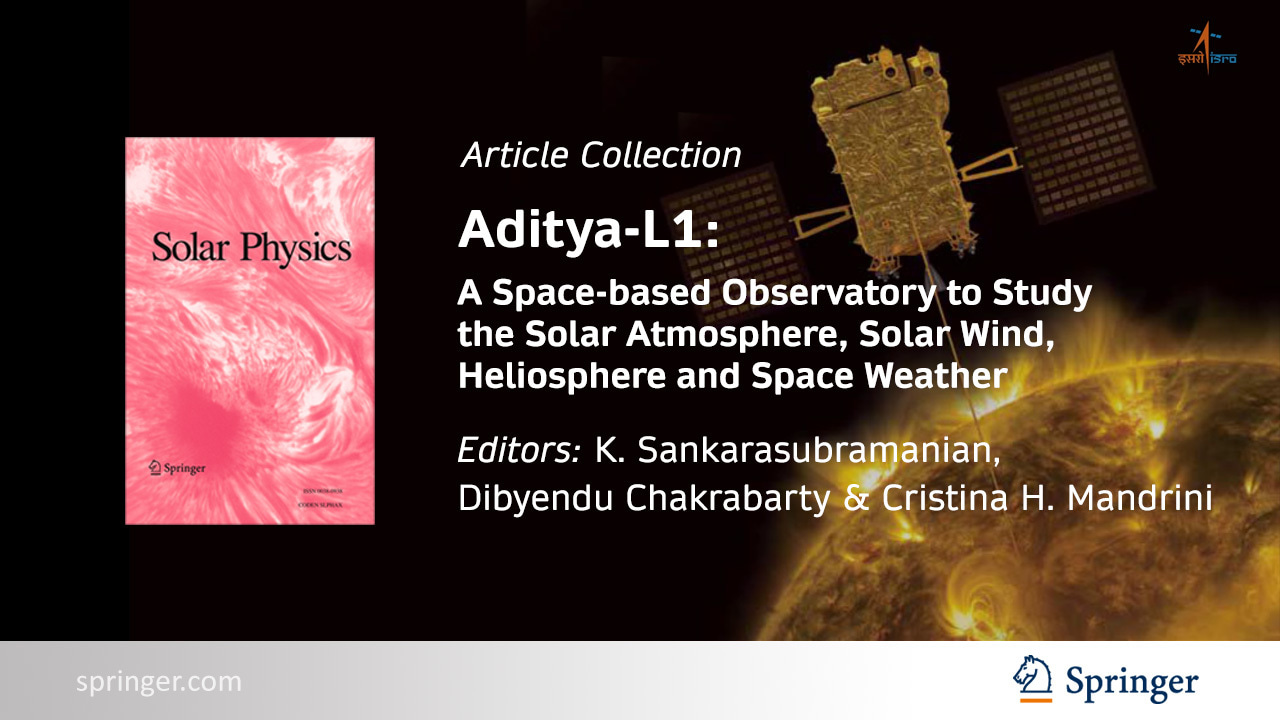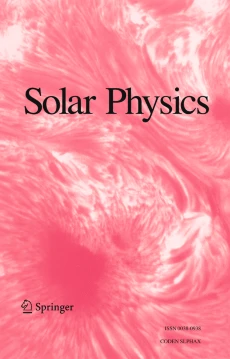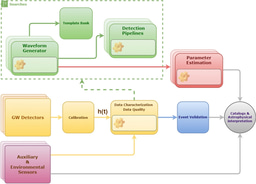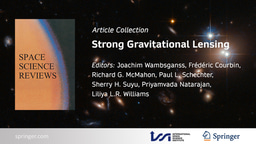Aditya-L1: A Space Based Observatory to Study the Solar Atmosphere, Solar Wind, Heliosphere, and Space Weather
Published in Astronomy

The article collection "Aditya-L1: A Space Based Observatory to Study the Solar Atmosphere, Solar Wind, Heliosphere, and Space Weather" has been completed and is now published in the journal Solar Physics. All articles are free to read from 14 November to 14 December 2025.
Aditya-L1 is India’s first dedicated observatory-class solar mission, which was launched from the Indian space port of Sriharikota on 2 September 2023. The satellite was placed in the halo orbit around the first Lagrange point of the Sun-Earth system on 6 January 2024 and completed the first orbit on 2 July 2024. Aditya-L1 is configured with seven payloads, four of which are remote sensing and three in situ payloads.
This topical collection consists of a group of ten articles that detail the science objectives of each instrument on board Aditya-L1 mission and their configuration. The articles also cover the laboratory calibration and initial on board observations, providing a glimpse of potential observables from the Aditya-L1 mission.
Read the summarizing Editorial: Sankarasubramanian, K., Chakrabarty, D. & Mandrini, C.H. Aditya-L1: A Space Based Observatory to Study the Solar Atmosphere, Solar Wind, Heliosphere, and Space Weather. Sol Phys 300, 156 (2025). https://doi.org/10.1007/s11207-025-02573-2
Follow the Topic
-
Solar Physics

Solar Physics is a leading journal publishing comprehensive research on the Sun.
Ask the Editor – Space Physics, Quantum Physics, Atomic, Molecular and Chemical Physics
Got a question for the editor about Space Physics, Quantum Physics, Atomic, Molecular and Chemical Physics? Ask it here!
Continue reading announcementRelated Collections
With Collections, you can get published faster and increase your visibility.
How SDO Has Revolutionized Our Understanding of the Sun
This article collection has been inspired by the work presented at the SDO 2025 Science Workshop held in Boulder, CO, from February 17 to 21, 2025. This issue will primarily focus on highlighting advancements in our understanding of the Sun during Solar Cycles 24 and 25. While SDO data and science is central to this collection, given their extensive coverage across various spatial and temporal scales, contributions utilizing data from other observatories, theoretical models, and simulations are also encouraged.
We invite research submissions that explore how enhanced data and advanced modeling from Solar Cycles 24 and 25 have deepened our understanding of the solar magnetic fields, internal dynamics, and solar activity. Of particular interest are studies demonstrating how these studies have improved activity predictions and space weather forecasting.
This topical collection is not a conference proceeding, and it is not limited to research presented at the workshop.
Publishing Model: Hybrid
Deadline: Feb 28, 2026
Applications of Machine Learning in Solar Physics
A collection of articles on applications of machine learning techniques in solar and heliophysics, such as solar feature detection and solar event classification, solar cycle prediction, space weather forecasting, etc.
While the Living Review "Machine learning in solar physics" (13 July 2023) serves as a general introduction to the topic, we encourage authors to submit their work on specific applications of machine learning methods, neural networks, and deep learning techniques in solar and heliophysics to the journal Solar Physics.
Publishing Model: Hybrid
Deadline: Ongoing






Please sign in or register for FREE
If you are a registered user on Research Communities by Springer Nature, please sign in